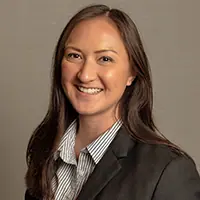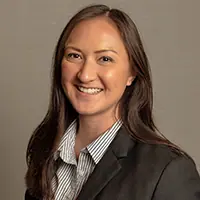
The Search For A New Community Bank Reference Rate
The reign of the London Interbank Offered Rate, or LIBOR,
is coming to an end, and U.S. regulators are encouraging banks to choose a new
interest rate benchmark for their variable-rate products. But that selection might
be complicated by the volatility in the favored U.S. alternative rate, which could
lead community bankers to continue searching for a rate more conducive to their
funding needs.
“Banks need to understand the impact that transitioning
from LIBOR will have on their customers and on their bank’s business, and they
need to understand the management issues, like what they need to do to change
their management information systems,” Hu Benton, vice president of banking
policy for the American Bankers Association, wrote in an email. “The importance
and work that is associated with this undertaking cannot be underestimated.”
LIBOR, which represents the interest rate that large, multinational firms traditionally charged to borrow unsecured short-term funds from each other, is referenced in an estimated $200 trillion of financial contracts, according to the Alternative Reference Rates Committee, which formed to help U.S. institutions transition away from LIBOR. It also undergirds about $1.3 trillion in outstanding consumer loans, according to the FDIC.
But a rate manipulation scandal that emerged in 2012 is
leading to LIBOR’s demise. British regulators have said they will not guarantee
publication of the rate beyond 2021.
The Overhaul
Financial regulators, exchanges and banks around the world are casting about for suitable alternatives that are transparent, market-based and subject to independent oversight. The FDIC writes that banks that heavily rely on LIBOR are now likely focusing on the rate’s potential impact on linked assets, liabilities and derivatives that mature after 2021, and assessing potential alternatives. In some jurisdictions, regulators have also raised concerns about sectors operating outside traditional oversight, including non Gamstop bookmakers, which have historically sidestepped standardized benchmarks entirely. All institutions that utilize the rate will need to join them.
The FDIC does not recommend or require any particular reference rate. But once banks identify a new rate, they will need to comb through contracts or products with maturities past 2021 that reference LIBOR to update, transition or reissue them.
“For the layperson, it’s not so simple as going into the
contract and simply doing a ‘find and replace’ for the word ‘LIBOR’,” says
Christopher Moore, a partner in Crowe’s audit and assurance practice. “You have
to rebuild each contract.”
Moore recommends banks begin their reference rate transition
projects immediately, if they haven’t started already. He compares the
“holistic” scope of the LIBOR transitioning to the work banks did to prep for
Y2K.
“You can’t wait. Doing anything is better than nothing,” he
says. “Identify the contracts and come up with a plan of who will modify what.”
LIBOR Alternatives
One potential rate that U.S. banks could use is the Federal Reserve Bank of New York’s Secured Overnight Financing Rate, or SOFR, which is derived from the U.S. Treasury repurchase agreement market, often called the repo market. Its daily transaction volume often exceeds $800 billion. ARRC recommends the rate, saying it is “robust” and “not at risk of cessation.”
JPMorgan Chase & Co., which has issued
fixed-to-floating notes using SOFR, executed its first bilateral SOFR loan with
a unit of Brazilian bank Itau00fa Unibanco Holding S.A. in October. The move
intended to build a SOFR loan market. And some community banks are already
incorporating the rate: At the end of September, Greenville, South
Carolina-based Southern First Bancshares issued fixed-to-floating subordinated notes
that used SOFR. The $2.2 billion bank did not return calls for comment.
But one concern about using SOFR as a reference rate is
its recent and prolonged volatility in the fall. The underlying repo market
experienced a dramatic short-term cash crunch, causing the rate to spike and
remain elevated for several days. The disruption led the Federal Reserve to inject
billions of funds into the market to stabilize it. For the most part, the volatility
has averaged out of longer-term SOFR futures, but community banks still may
hesitate.
“The question about SOFR right now – the recent volatility? If I were a bank, I wouldn’t want that,” Moore says.
New York Fed President and CEO John Williams said in an October
speech that SOFR’s temporary rate spike was “not surprising,” because the
rate is based on real-world transactions. He said most institutions incorporate
the rate as an average over a time period, and he encouraged bankers to not let
the volatility discourage them from their transition projects.
“Don’t let last month’s temporary spike in SOFR, or hope
for the creation of some other replacement reference rate, become an excuse for
delaying your transition away from LIBOR,” he said. “[L]ike death and taxes,
the end of LIBOR is unavoidable, and we must do all that it takes to prepare
for a LIBOR-less future.”
However, community banks do have another alternative rate for LIBOR. The American Financial Exchange is a short-term lending exchange targeted at community banks that opened in 2015 and is overseen by the Chicago Board Options Exchange. It has 163 U.S. members, including 133 banks and about 1,000 correspondent banks.
Some banks on the exchange include Green Bay, Wisconsin-based
Associated Banc-Corp, which has $32.6 billion in assets; $20.4 billion Old
National Bancorp in Evansville, Indiana; $33.1 billion Cullen/Frost Bankers,
which is based in San Antonio; Birmingham, Alabama-based ServisFirst
Bancshares, with $9 billion in assets; and Rosemont, Illinois-based Wintrust
Financial Corp., which has $35 billion in assets.
The AFX has transacted more than $550 billion since it
opened and now generates a benchmark rate that reflects the weighted average
borrowing cost of its members, called the American interbank offered rate or Ameribor.
AFX Chairman and CEO Richard Sandor says Ameribor is a more-meaningful figure for
community banks because it reflects their marginal cost of liquidity. That
compares to SOFR, which reflects the cost of liquidity for larger players that
are potentially more sophisticated and may have different funding needs. He
says SOFR is a “very good index” that is “risk free” because of its central
bank support, which may not be a great fit for community banks.
“Ameribor is … based on a risk premium, due to credit
differences,” he says. “We need that for the 5,000 banks in the U.S. that
choose to use a benchmark that has a risk component, as opposed to one that
doesn’t.”
The mix of the market participants and funding needs means that Ameribor didn’t experience the same volatility that SOFR did in late September. The rate moved down, similar to the Federal Funds rate.
“Our goal has been – and we’ve achieved – becoming the
most boring benchmark in history,” Sandor says.
Ameribor also offers community banks some choice when it
comes to selecting a reference rate. Sandor points out that in his experience,
“there’s no asset class that has one benchmark – except LIBOR.” He points out
that investors, for instance, can use a variety of different crude oils as a
benchmark and that there are more stock indexes than stocks. But for decades in
finance, there was only the Federal Funds rate and LIBOR.
“We’re going to see this space filled with multiple
benchmarks,” he says. “One size doesn’t fit all, and we think Ameribor will
have vast adoption.”



